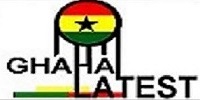
The Jordan River
Ofosu Johnson,
“Then Yeshua came from Galilee to the Yarden (Jordan) to be baptized by Yohannan.” (Matthew 3:13)
Many Believers seeking to deepen their understanding of the Bible and follow in the footsteps of Yeshua (Jesus) visit Israel’s Jordan River, a river of rich historical and spiritual significance for both Jews and Christians.
Nehar haYarden (הירדן נהר, Jordan River) played a central role in the ministry of Yeshua (Jesus).
Luke 3:23 reveals that at about the age of 30, Yeshua began His public ministry here by being mikvahed (immersed) by Yohannan (John).
Upon Yeshua’s immersion, Yohannan witnessed a physical manifestation of the Ruach haKodesh (Holy Spirit) descend on Him:
“As soon as Yeshua was immersed, He went up out of the water. At that moment heaven was opened, and he saw the Spirit of God descending like a dove and alighting on Him. And a voice from heaven said, ‘This is My Son, whom I love; with Him I am well pleased.’” (Matthew 3:16–17)

The Mikvah of Yeshua (Bapteme de Jesus),
by James Tissot
While the word “baptism” is the term commonly used today, mikvah is the Jewish term for what Yohannan was performing on the banks of the Jordan, or Yarden in Hebrew. In fact, the practice of the mikvah was instituted by God through Moses in the Torah, so this was a necessary and regular part of the Biblical Jewish lifestyle.
“The whole Judean countryside and all the people of Jerusalem went out to him [Yohannan]. Confessing their sins, they were baptized by him in the Jordan River.” (Mark 1:5)
Yeshua, as God’s Son, had nothing to confess of His own. Yet, He bore our sins in Himself and carried them all the way to His execution. (Isaiah 53:4; 1 Peter 2:24)
For Believers in Yeshua who are miikvahed, the event represents much more than a symbolic cleansing of sins.
Being totally immersed under the water is a symbol of death to one’s old life, and rising up from the water symbolizes the birth of a brand new life in Yeshua:
“We were therefore buried with Him through baptism into death in order that, just as Messiah was raised from the dead through the glory of the Father, we too may live a new life.” (Romans 6:4)

A Christian pilgrim wearing a robe dips into the
banks of the Jordan River at Qasr el Yahud.
Ritual Purity in the Tanakh
Many Believers are surprised to learn that God instituted the practice of the mikvah in the Torah. It is the specified means for restoring ritual purity, and it was regularly performed in natural bodies of water, such as springs or rivers.
The Torah mandated ritual cleansing through the mikvah for the following:
- After tzaraat (certain skin conditions), commonly translated today as leprosy (Leviticus 14:6–9)
- After the discharge of abnormal body fluids (Leviticus 15:13)
- After seminal emissions following sex or related to nocturnal emissions (Leviticus 15:16)
- Following the monthly menstrual cycle by a woman to regain her purity
- After contact with a dead body (Numbers 19:19)
Second Temple era mikvah
- After the ritual of the Red Heifer by the kohen (priest) who performs the ritual(Numbers 19:7–8)
- By the kohanim (priests) during consecration (Exodus 29:4, 40:12)
- After the scapegoat (Azazel) has been sent away on Yom Kippur (Day of Atonement) by the High Priest and by the one who leads the goat away (Leviticus 16:24, 16:26, 16:28)
Today the waters of the mikvah pools throughout the world still cleanse women after menstruation or childbirth and men after emission of bodily fluids.
It is also traditional for a bride and groom to use it before their wedding and for men to visit it on Erev or Eve of Yom Kippur and Erev Rosh HaShanah (New Year’s Eve).
The mikvah is also part of the conversion to Judaism process.

Taking the Bride to the Mikvah, by Shalom Koboshvili
Qasr el Yahud
The traditional location of the spot where Yeshua was mikvahed is Qasr el Yahud or Kasser Al Yahud, Arabic for the Castle of the Jews.
The local ruins of a 4th–5th century Byzantine monastery and church are evidence that this location has been a place of Christian pilgrimages for centuries.
The stability and safety of the British Mandate period from 1920–1948 allowed for the construction of many churches, chapels, and monasteries, which stretch about three kilometers (two miles) south of the site.
However, an earthquake in 1956 seriously damaged the buildings. More importantly, Jordan, whose border runs along the east bank of the river, attacked Israel after it became a nation in 1948 and occupied the west bank of the Jordan—Israel’s ancient heartland of Judea and Samaria—where Qasr el Yahud is located.

Christian pilgrims visit Qasr el Yahud.
After Arab forces gathered against Israel again in 1967, Israel captured the territory back from Jordan. Although Jordan has since renounced its claim to the land, the Palestinians now demand this land for an independent Palestinian state.
Security with our neighbor to the east, Jordan, continued to be problematic until Israel and Jordan signed a peace treaty in 1994. Over those tenuous years before the treaty, the monks gradually abandoned the churches and monasteries and, today, these ruins are inaccessible due to risk of landmines that Israel laid during that period.
Qasr el Yehud, however, has been recently rehabilitated and the immediate area has been cleared of mines.
After 44 years of essentially being closed, this historic site reopened to the public in 2011 and is now administered by the Israeli Civil Administration and the Israeli Ministry of Tourism.
Located in the wilderness of the Jordan River Valley, east of Jericho and north of the Dead Sea, it isn’t easy to get here; but once you arrive, it offers parking, wheelchair access, showers, and prayer facilities, as well as decking and marble stairs leading into the Jordan.

The Ark Passes Over the Jordan, by James Tissot
The Rich History of the Jordan
The excitement and significance of this special place is amplified by other historical events that tradition says took place here at Qasr el Yahud.
After 40 years of wandering in the wilderness, Joshua led the Israelites over the Jordan into the Promised Land, presumably in this spot. This would be the place then that the waters parted as the priests carrying the Ark stepped into the Jordan, and the Israelites crossed on dry ground. (Joshua 3)
This spot may also be where Elijah rolled up his cloak and struck the waters so that they parted. He crossed with Elisha before ascending to heaven on a fiery chariot (2 Kings 2). After this, Elisha took Elijah’s cloak and crossed the Jordan, once again striking it so that the waters parted.
Because this traditional site was closed for so long, a second site called Yardenit (Little Jordan) was opened in 1981 further north on the southern tip of the Sea of Galilee. This location may have been used by Yeshua to mikvah His talmidim (disciples).
Many Believers come to Israel especially to be baptized in the Jordan, and Yardenit’s location gives visitors safe and easy access.
Each year, it is visited by hundreds of thousands of pilgrims, and many of them either get baptized for the first time or they rededicate their lives to Adonai here.

Christian pilgrims are baptized at Yardenit (Little Jordan).
The Jordan: A Source of Life
“It is as if the dew of Hermon were falling on Mount Zion. For there the LORD bestows His blessing, even life forevermore.” (Psalm 133:3)
The Jordan (Yarden), which means descender, is Israel’s prime source of water for drinking and agriculture.
Most of its water originates approximately 200 meters (650 feet) above sea level in the rain and snow that fall on Mount Hermon in the far north.
From Mount Hermon, the river flows south into the Sea of Galilee (also called Kinneret, Lake of Gennesaret, and Lake Tiberias), but it doesn’t stop there. At the southern tip of the Galilee, the Jordan exits and descends south to 420 meters (1,378 feet) below sea level where it empties into the Dead Sea.
Upstream of the Sea of Galilee, three main tributaries form the head of the Jordan River:
- The Hermon or Banias, which begins as a spring at the foot of Mount Hermon;
- The Dan, whose source is also at the base of Mount Hermon; and
- The Snir or Hasbani, which also flows from Mount Lebanon.

Below the Sea of Galilee are other tributaries:
- The Jalud in the Beth Shean valley;
- The Yarmouk River;
- The Zarqa River, the Biblical Jabbok; and
- Jabesh (Wadi Yabis) named after Jabesh-Gilead, a town mentioned in the Torah.
As the river flows through the Jordan valley below the Galilee, it becomes progressively more saline, picking up about 850,000 tons of salt, as well as debris, so that by the time it empties into the Dead Sea, there is no life left in the water, at least not for drinking or agriculture.
Some environmentalists say that the river itself is in danger of dying in the Jordan Valley.

The Yarmouk River, which originates on the south-eastern slopes of
Mount Hermon and the Hauran Plateau, flows into the Jordan River.
It forms the southern limit of the Golan Heights in Israel’s north and
also defines a short portion of the border between Jordan and Israel.
The Jordan Valley
“In the future He will honor Galilee of the nations, by the Way of the Sea, beyond the Jordan. The people walking in darkness have seen a great light.” (Isaiah 9:1–2)
The Tanakh (Old Testament) mentions this important river about 175 times. The Brit Chadashah (New Testament) mentions it 15 times.
It first appears in Genesis 13:10 when Abraham told Lot to choose which land he would inhabit.
“Lot looked around and saw that the whole plain of the Jordan toward Zoar was well watered, like the garden of the Lord, like the land of Egypt.”
The entire valley between the Sea of Galilee and the Dead Sea along the Jordan River seemed to Lot like the Garden of Eden, or at least a lush oasis.
So, Lot chose the fertile cities of Sodom and Gomorrah in the southern Jordan Valley as his new homeland.

The Jordan Valley overlooking the Sea of Galilee
Today, the Jordan Valley still attracts people. The northern part of the valley, which includes the Jordan River, is several degrees warmer than adjacent areas. It has a year-round agricultural climate, fertile soils and water supply that make it a key agricultural area.
Yet we know from Scripture that a section of the lush, southern region that Lot chose was devastated when, due to sin, God “overthrew those cities and the entire plain, destroying all those living in the cities—and also the vegetation in the land.” (Genesis 19:25)
A land that once thrived from the river’s pure, life-giving water, now cried out for it, and still does. This perhaps is a visible reminder of what unrepentant sin does to our own life, spiritually and physically.
But God is a God of restoration, and He does not only renew spiritually, He also renews physically.

The Destruction of Sodom and Gomorrah, by John Martin
Healing Waters from the Temple
Although the Jordan is polluted, and its resources severely stretched and fought over by the nations in its vicinity, the prophet Ezekiel describes a new river of life that will begin at the Temple threshold, flowing into and restoring the Dead Sea, which is fed by the Jordan.
“When it empties into the sea, the salty water there becomes fresh. Swarms of living creatures will live wherever the river flows. … Fishermen will stand along the shore; from En Gedi to En Eglaim there will be places for spreading nets. … Fruit trees of all kinds will grow on both banks of the river. … Every month they will bear fruit, because the water from the sanctuary flows to them. Their fruit will serve for food and their leaves for healing.” (Ezekiel 47:8–12)
The Book of Revelation describes it as a new river of life “clear as crystal, flowing from the throne of God and of the Lamb down the middle of the great street of the city.” (Revelation 22:1–2)

Accumulations of salt in the Dead Sea.
The Talmud (Jewish Oral tradition) teaches that these waters will heal not only the Dead Sea, but presumably the waters that flow into it from the Sea of Galilee, which would also include the connecting Jordan River.
“To where do they flow? To the Sea of Tiberias [Sea of Galilee, Kinnereth] and then to the Sea of Sodom [Dead Sea], and then to the Great Sea [Mediterranean] to heal the salty waters and to sweeten them.” (Jerusalem Talmud 3:9)
This restoration of the River Jordan and the bodies of water it feeds is exactly what Yeshua does with our own spirits.
Yeshua says to all of us, “Let anyone who is thirsty come to Me and drink. Whoever believes in Me, as Scripture has said, rivers of living water will flow from within them.” (John 7:37)

Jacob Wrestles with the Angel, by Gustav Dore
The River of Miracles
“Consecrate yourselves, for tomorrow the Lord will do amazing things among you.” (Joshua 3:5)
In Genesis 32:11, Jacob crossed the Jordan and its eastern tributary, the Jabbok River (Zarqa River) situated east of Shechem, which is in present-day Samaria.
Here, Jacob wrestled with the angel of the Lord to receive a blessing, which he received along with a new name—Israel (Genesis 32:23–24).
Perhaps the most dramatic moment on the Jordan occurred when Joshua redeemed Israel from their desert existence by leading them across the Jordan to the Promised Land. Miraculously, the river dammed up even though it was flood season, and the people crossed a dry riverbed (Joshua 3).
Although all of Israel entered the Promised Land, not everyone lived on the west side of the Jordan. The river became the demarcation line between two groups of the tribes of Israel, with “nine tribes and the half tribe of Manasseh” settling on the west side. The tribes of Reuben, Gad, and the half tribe of Manasseh settled on the east side (Numbers 34:13–15; Joshua 13:7–8).

Naaman cleanses in the Jordan River to be healed of tzaraat, a Biblical
skin disease that is traditionally thought to be caused by gossip, murder,
perjury, forbidden sexual relationships, arrogance, theft, and envy.
In 2 Kings 5:14, Elisha sent Naaman the Aramean to bathe in the Jordan’s waters, and he was miraculously healed of leprosy.
In yet another miracle in 2 Kings 6:6, Elisha reclaimed a borrowed axe head that had sunk in the waters by causing it to float to the surface.
At the Jordan, Yohannan the Immerser announced the identity of Yeshua as “the lamb of God who takes away the sins of the world.”
The Jordan is also mentioned in connection with the coming of the Messiah “by the way of the sea, beyond Jordan, in Galilee of the nations.” (Isaiah 9:1–2)

The Sea of Galilee, which is located in the Jordan Valley, is 19 kilometers
(12 miles) long and from 5–10 kilometers (3–6 miles) wide.
Yeshua is soon coming again and, in the meantime, He has given His followers a spiritual source of water that wells up within them.
“Whoever drinks the water I give them will never thirst. Indeed, the water I give them will become in them a spring of water welling up to eternal life.” (John 4:14)
This spring of spiritual renewal brings everlasting life and is available now by believing in the One the Hebrew prophets spoke of—Yeshua haMashiach (Jesus the Messiah).
If you wish to drink of His waters of life, or wish to rededicate your life to Him, why not follow in His footsteps and be mikvahed in Israel’s Jordan River.

Johnson, the fact that Israel has once again become an independent nation and the Jewish People are being drawn back to their ancient land is evidence that God’s Spirit is moving in the midst of His people.
You can be a part of this end-time move of God by helping us bring Yeshua to Israel and the World.
Time is short. He is soon returning.
“For I am ready to set things right, not in the distant future, but right now! I am ready to save Jerusalem and show My glory to Israel.” (Isaiah 46:13)








